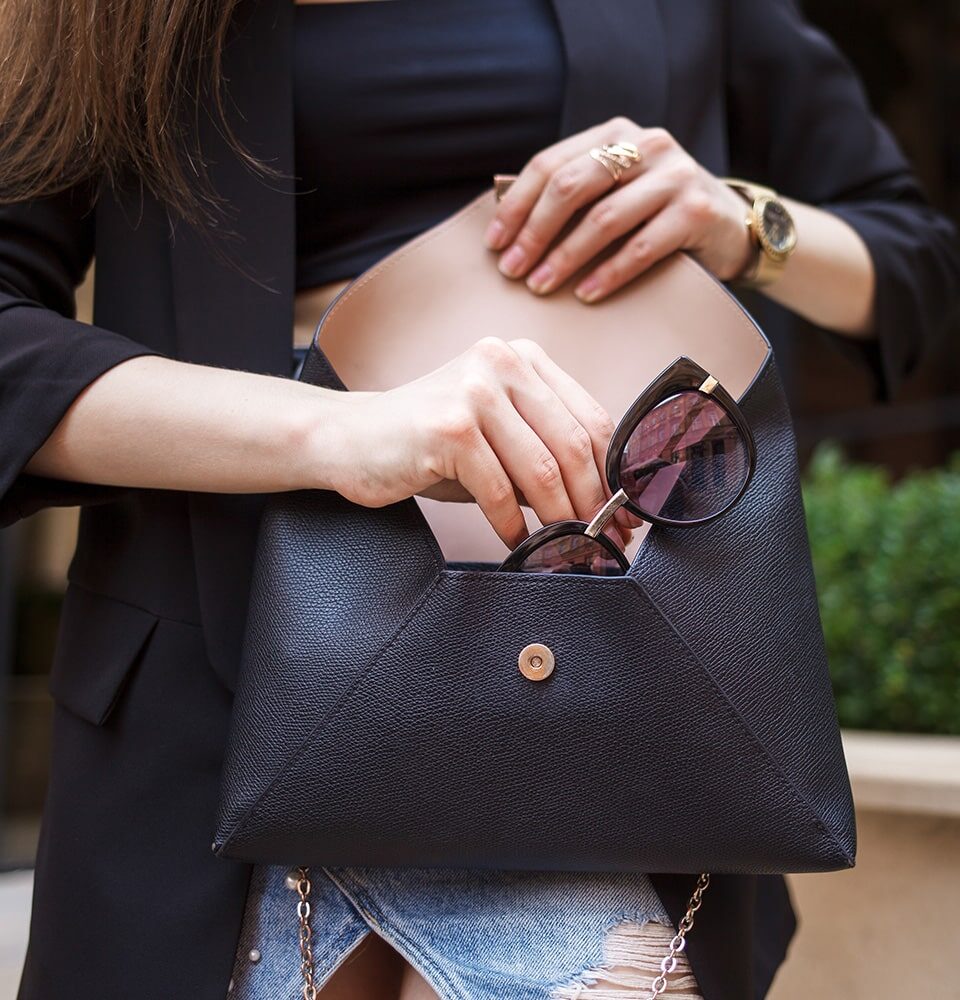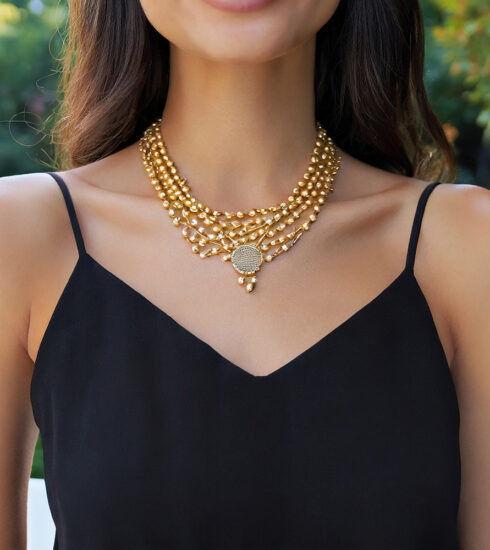Why Luxury Brands are Embracing the Popular Secondhand Market
In a world where conscious consumerism and accessibility are gaining traction, the luxury industry is undergoing a significant transformation. The rise of pre-owned luxury has become a force to be reckoned with, as more and more consumers are turning to the secondhand market for their high-end fashion fix.
What was once considered taboo is now embraced by luxury brands themselves, who are recognizing the potential of this booming market.
This shift towards pre-owned luxury is not only driven by environmental concerns but also by the desire for exclusivity and unique finds. From iconic handbags to sought-after timepieces, the secondhand market offers a treasure trove of luxury goods that allow consumers to indulge in their passion for designer pieces while also making a sustainable choice.
In this article, we will explore why luxury brands are embracing the secondhand market and how this trend is reshaping the future of the industry.
The changing consumer mindset towards pre-owned luxury
The changing consumer mindset towards pre-owned luxury is a key driver behind the industry’s shift towards embracing the secondhand market. In the past, buying pre-owned luxury items was often seen as a sign of financial struggle or a lack of access to new luxury goods. However, this perception has changed dramatically in recent years.
Today, owning a pre-owned luxury item is seen as a wise and sustainable choice that allows consumers to enjoy the prestige and craftsmanship of luxury without the hefty price tag.
One of the main reasons for this shift in consumer mindset is the growing concern for the environment. As consumers become more aware of the negative impact of fast fashion and disposable consumption, they are seeking alternatives that align with their values.
Buying pre-owned luxury items not only reduces waste but also extends the lifecycle of these high-quality products. Consumers are now proud to showcase their pre-owned luxury finds, as it demonstrates their commitment to sustainability and conscious consumption.
Another factor driving the changing consumer mindset is the desire for exclusivity and unique finds. In a world where mass-produced fashion dominates, owning a rare and limited-edition luxury item has become a status symbol. Pre-owned luxury items offer consumers the opportunity to own pieces that are no longer available in stores, making them even more desirable.
The thrill of finding a coveted vintage Chanel bag or a discontinued Rolex watch adds to the allure of the secondhand market, attracting consumers who crave individuality and a sense of personal style.
The rise of social media has also played a significant role in changing the consumer mindset towards pre-owned luxury. Influencers and celebrities are now proudly showcasing their pre-owned luxury finds on platforms like Instagram, normalizing the idea of buying secondhand.
This has created a ripple effect, inspiring their followers and the wider audience to explore the world of pre-owned luxury. As a result, the stigma attached to buying pre-owned luxury items has been replaced with a sense of admiration and appreciation for the unique stories and history behind these pieces.
Benefits of embracing the secondhand market for luxury brands
Designer manufacturers are not just embracing the secondhand market to meet consumer demand; they are also recognizing the numerous benefits it offers for their business. By entering the pre-owned market, designers can open up new revenue streams and engage with a wider customer base. Here are some key benefits of embracing the secondhand market:
1. Increased brand exposure and customer acquisition
The pre-owned market attracts a different set of consumers who may not have considered purchasing new luxury items. By establishing a presence in the secondhand market, luxury brands can capture the attention of these consumers and introduce them to their brand. This can lead to new customer acquisitions and increased brand exposure.
2. Brand sustainability and circular economy
Embracing the secondhand market aligns luxury goods with the growing sustainability movement. By extending the lifecycle of their products, luxury goods contribute to the circular economy and reduce waste. This resonates with consumers who are increasingly conscious of the environmental impact of their purchasing decisions.
3. Maintaining brand value and exclusivity
Designers often face challenges in controlling the resale market, which can impact their brand value and exclusivity. By entering the pre-owned market themselves, luxury brands can exercise more control over the resale of their products. This allows them to maintain brand value and control pricing, ensuring that their products retain their exclusivity.
4. Building customer loyalty and trust
By embracing the secondhand market, luxury designers demonstrate their commitment to their customers and their values. This builds trust and loyalty among consumers, who appreciate brands that are transparent and environmentally responsible. Consumers are more likely to engage with brands that align with their values, leading to increased customer loyalty and word-of-mouth referrals.
Embracing the secondhand market offers numerous benefits for luxury brands, including increased brand exposure, brand sustainability, maintaining brand value, brand storytelling, and building customer loyalty. By recognizing the potential of the pre-owned market and adapting their strategies, designers can tap into a thriving industry and reshape the future of the luxury industry.
Challenges and considerations when entering the pre-owned market
While embracing the pre-owned market offers numerous benefits for designers, there are also challenges and considerations that need to be addressed.
Luxury brands must carefully navigate these challenges to ensure a successful entry into the pre-owned market. Here are some key challenges and considerations for designers:
1. Maintaining brand integrity and authenticity
Designers must ensure the authenticity of their pre-owned items to protect their brand integrity. Counterfeit products and unauthorized sellers pose a significant risk in the pre-owned market.
Luxury brands should establish rigorous authentication processes and partner with trusted platforms to authenticate and sell their pre-owned items. Maintaining brand integrity is crucial to retain customer trust and loyalty
2. Controlling pricing and resale value
Designers face challenges in controlling the pricing and resale value of their pre-owned items. The resale market can influence pricing and impact the perceived value of luxury products.
Luxury brands should carefully consider their pricing strategies and establish partnerships with reputable pre-owned platforms that maintain fair pricing practices. This allows them to maintain brand value and exclusivity in the pre-owned market.
3. Balancing supply and demand
The pre-owned market operates on the principles of supply and demand. Designers need to carefully manage their supply of pre-owned items to meet the demand without flooding the market. Over saturation can dilute the brand value and reduce the exclusivity of luxury products.
Luxury brands should consider limited releases of pre-owned items or establish partnerships with pre-owned platforms that regulate the supply to maintain brand exclusivity.
4. Protecting customer experience and satisfaction
Designer brands must ensure a seamless customer experience in the pre-owned market to maintain customer satisfaction and loyalty. This includes providing detailed product descriptions, high-quality images, and responsive customer service.
Luxury brands should invest in technologies and platforms that enhance the customer experience, such as virtual showrooms and personalized recommendations. Maintaining a high level of customer satisfaction is crucial to drive repeat purchases and positive word-of-mouth referrals.
Luxury goods entering the pre-owned market need to address challenges related to brand integrity, pricing control, supply and demand, customer experience, and marketing strategies. By carefully navigating these challenges and considering the unique aspects of the pre-owned market, luxury brands can successfully tap into the growing demand for pre-owned luxury and reshape the future of the industry.
How designers can authenticate and maintain quality control in the pre-owned market
Authenticity and quality control are of utmost importance in the pre-owned market, where counterfeit products and unauthorized sellers pose a significant risk. Luxury manufacturers must establish robust authentication processes and maintain quality control to ensure customer trust and loyalty. Here are some key strategies that luxury brands can adopt to authenticate and maintain quality control in the pre-owned market:
1. Establish dedicated authentication teams
Many luxury manufacturers establish dedicated teams or partner with reputable authentication experts to verify the authenticity of pre-owned items. These teams should possess in-depth knowledge of the brand’s product history, materials, craftsmanship, and security features.
By having experts who are well-versed in identifying authentic products, luxury brands can ensure accurate authentication and protect their brand integrity.
2. Invest in advanced technologies
Designer brands leverage advanced technologies such as blockchain and RFID (Radio Frequency Identification) to track and authenticate their pre-owned items. Blockchain technology provides a decentralized and immutable record of a product’s history, ensuring transparency and traceability.
RFID tags can be embedded in luxury products to enable real-time tracking and authentication. By investing in these technologies, luxury brands can enhance their authentication processes and maintain control over their pre-owned items.
3. Partner with trusted platforms
Luxury manufacturers often establish partnerships with reputable pre-owned platforms that have established authentication processes and quality control measures in place. These platforms should have a strong reputation for authenticity and a commitment to upholding brand value.
If you are looking for good deals on quality watches and not pre-owned; My Gift Stop is a reputable authorized watch retailer operating online since 2002 and has garnered a name for itself through their extensive watch selection, carrying many major-name brands and models.
4. Training and education
Designer manufacturers should invest in training and education programs for their employees to enhance their knowledge of authentication and quality control. This includes educating sales associates, customer service representatives, and other relevant staff members on the brand’s product authentication guidelines.
By equipping their employees with the necessary knowledge and skills, luxury brands can ensure consistent and accurate authentication across all touch points.
5. Transparency and documentation
A quality brand will provide detailed documentation and certificates of authenticity for their pre-owned items. This includes proof of purchase, original packaging, and any relevant product history.
By providing transparent and comprehensive documentation, designer brands instill confidence in their customers and reinforce the authenticity of their pre-owned items.
6. Continuous monitoring and feedback
Implement continuous monitoring and feedback mechanisms to identify any potential issues or gaps in their authentication and quality control processes. This can involve regular audits, customer feedback analysis, and collaboration with industry experts.
By staying vigilant and responsive, luxury brands can continuously improve their authentication and quality control measures.
Luxury manufacturers can authenticate and maintain quality control in the pre-owned market by establishing dedicated authentication teams, investing in advanced technologies, partnering with trusted platforms, providing training and education, ensuring transparency through documentation, and implementing continuous monitoring and feedback mechanisms. By prioritizing authenticity and quality control, luxury brands can build customer trust and loyalty in the pre-owned market.









